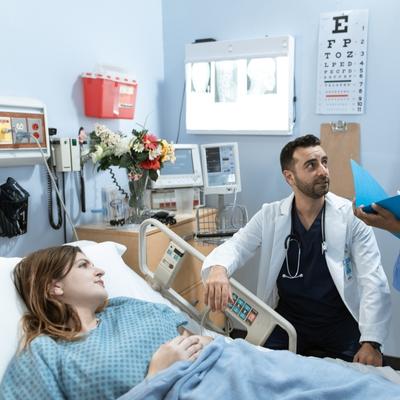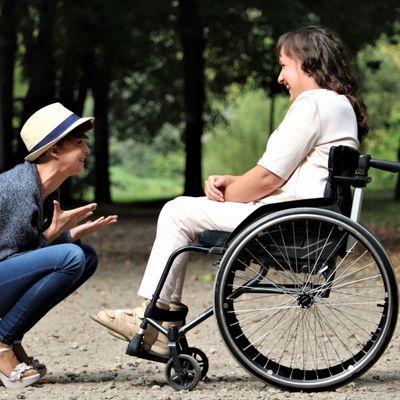In the demanding world of healthcare, the well-being of caregivers often takes a backseat to patient care. However, the introduction of patient lifts has revolutionized not only patient handling but also caregiver health and safety. These essential devices are transforming the landscape of healthcare by significantly reducing the physical strain on caregivers, preventing injuries, and improving overall working conditions. As we delve into the impact of patient lifts, we'll explore how these innovative tools are not just lifting patients but elevating the entire caregiving profession to new heights of safety and efficiency.
The Evolution of Patient Handling: From Manual Lifting to Mechanical Assistance
The journey from traditional manual patient handling to the widespread use of patient lifts reflects a growing awareness of caregiver safety and ergonomics.
Traditional Approaches
- Manual lifting and transferring of patients
- High risk of caregiver injuries
- Reliance on physical strength and technique
- Limited consideration for long-term caregiver health
Modern Lift-Assisted Care
- Mechanical assistance for patient transfers
- Significantly reduced physical strain on caregivers
- Focus on ergonomic design and safety features
- Integration of technology for smoother operations
- Emphasis on caregiver health and injury prevention
Key Impacts of Patient Lifts on Caregiver Health
Essential Benefits for Caregiver Well-being
- Injury Reduction: Up to 56% decrease in injury risk with proper lift usage
- Muscle Strain Alleviation: Significant reduction in muscle activity across multiple groups
- Improved Ergonomics: Better body mechanics and reduced awkward postures
- Long-term Health Benefits: Decreased risk of chronic musculoskeletal disorders
- Enhanced Job Satisfaction: Reduced physical demands leading to higher job satisfaction
- Efficiency Boost: Streamlined patient transfers saving time and energy
- Psychological Relief: Reduced anxiety about potential injuries during transfers
- Workplace Safety Culture: Promotion of overall safety awareness in healthcare settings
Patient Lift Solutions Enhancing Caregiver Safety

Hoyer Advance-E Power Lift
This electric lift significantly reduces physical strain on caregivers during patient transfers.
- Electric operation minimizes manual effort
- Ergonomic design for caregiver comfort
- Smooth operation reduces risk of sudden movements
- Compact for easy maneuvering in tight spaces

Hoyer Manual Hydraulic Lift
While manual, this lift still offers significant ergonomic benefits over completely manual transfers.
- Hydraulic system reduces lifting effort
- Stable base for increased safety
- Adjustable width legs for versatile positioning
- Suitable for facilities with budget constraints

Bestlift PL350CT Full Body Patient Lift
This lift's design focuses on caregiver safety and ease of use during full-body transfers.
- Compact and foldable for easy storage and transport
- High weight capacity reduces strain on caregivers
- Ergonomic handle design for comfortable operation
- Smooth-rolling casters for effortless positioning

Hoyer Deluxe Power Lift
This advanced power lift offers superior ergonomics and safety features for caregivers.
- Powerful electric motor for effortless lifting
- Wide lift range accommodates various transfer situations
- Ergonomic control pendant for easy operation
- Robust construction enhances caregiver confidence
Impact of Patient Lifts Across Healthcare Settings
1. Hospitals and Acute Care
In fast-paced hospital environments, patient lifts significantly reduce the risk of caregiver injuries during frequent patient transfers. They allow for quicker, safer mobilization of patients post-surgery and in critical care units.
2. Long-Term Care Facilities
Nursing homes and assisted living centers benefit from reduced staff injuries and improved efficiency in daily care routines. The consistent use of lifts helps maintain caregiver health over long-term employment.
3. Home Healthcare
For home caregivers, patient lifts provide crucial support, reducing the physical toll of caregiving and allowing for longer-term care provision without burnout or injury.
4. Rehabilitation Centers
In rehab settings, lifts enable therapists to focus on patient progress rather than the mechanics of movement, reducing physical strain and allowing for more effective therapy sessions.
For more insights on how patient lifts are used in various healthcare settings, explore our article on Patient Lifts in Institutional Settings: Hospitals, Nursing Homes, and Rehabilitation Centers.
Challenges and Strategies for Maximizing Lift Benefits
While patient lifts offer significant advantages, there are challenges to address:
Initial Resistance to Change
Some caregivers may resist adopting new lift technologies.
Training Requirements
Comprehensive training is necessary for safe and effective lift usage.
Space Constraints
Some care environments may have limited space for lift maneuvering.
Maintenance Needs
Regular upkeep is crucial for ensuring lift safety and longevity.
Strategies for overcoming these challenges include:
- Implementing comprehensive, ongoing training programs
- Fostering a culture of safety that prioritizes lift usage
- Designing care spaces with lift usage in mind
- Establishing regular maintenance schedules and protocols
Choosing the Right Patient Lift for Caregiver Safety
Selecting the appropriate patient lift is crucial for maximizing caregiver safety. Consider the following factors:
For more detailed guidance on selecting the right patient lift, read our article on Choosing the Right Patient Lift for Home Use: A Comprehensive Guide.
Maintenance Tips for Ensuring Ongoing Caregiver Safety
Proper maintenance of patient lifts is crucial for ongoing caregiver safety. Follow these key tips:
- Regular Inspections: Conduct visual checks before each use and perform thorough inspections monthly.
- Lubrication: Keep all moving parts well-lubricated according to manufacturer guidelines.
- Battery Care: For electric lifts, ensure batteries are charged regularly and replaced as needed.
- Sling Checks: Inspect slings for wear and tear, replacing them at the first sign of damage.
- Professional Servicing: Schedule annual professional maintenance to address any potential issues.
For a comprehensive guide on lift maintenance, refer to our article: Patient Lift Maintenance: Essential Tips for Longevity and Safety.
Conclusion: Elevating Care Through Caregiver Safety
Patient lifts have revolutionized healthcare by significantly enhancing caregiver safety and well-being. By reducing physical strain, preventing injuries, and improving overall working conditions, these devices play a crucial role in sustaining a healthy, efficient, and satisfied caregiving workforce.
The impact of patient lifts extends far beyond the immediate physical benefits. They contribute to a culture of safety, improve job satisfaction, and allow caregivers to focus more on patient care rather than the mechanics of patient handling. As healthcare continues to evolve, the role of patient lifts in protecting and supporting caregivers will only grow in importance.
By investing in quality patient lifts and prioritizing their proper use, healthcare facilities and home care environments can create safer, more supportive conditions for caregivers. This, in turn, leads to better patient care, reduced healthcare costs, and a more sustainable caregiving profession.
Prioritize Caregiver Safety with the Right Patient Lift
Explore our range of patient lifts designed to enhance caregiver safety and efficiency. Find the perfect lift to support your caregiving needs and create a safer working environment.
Shop Patient Lifts Now








